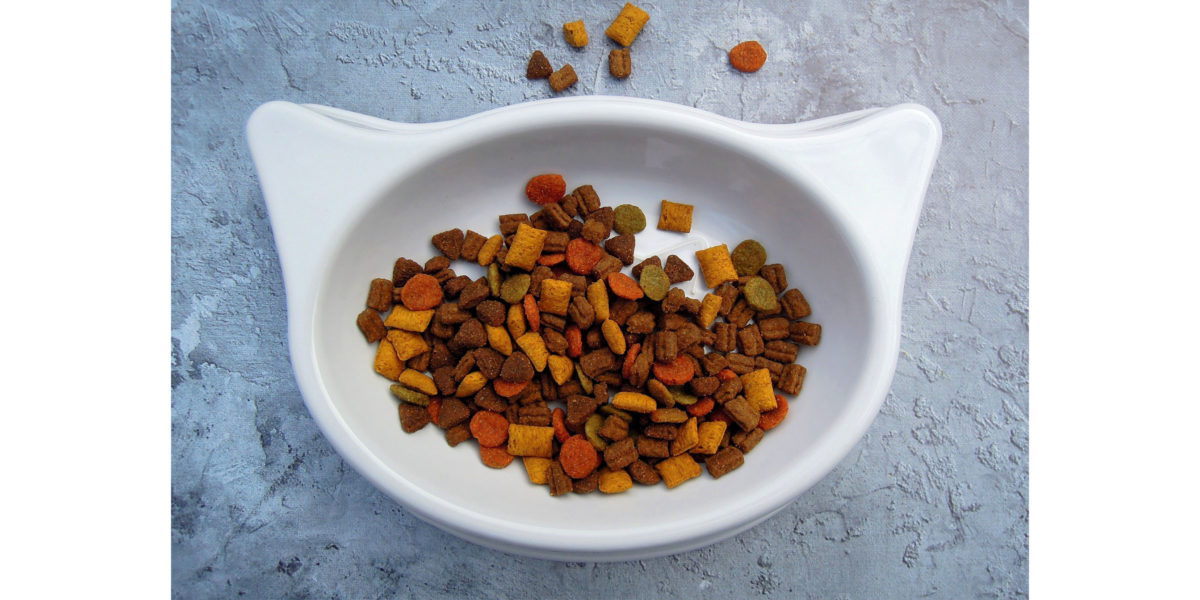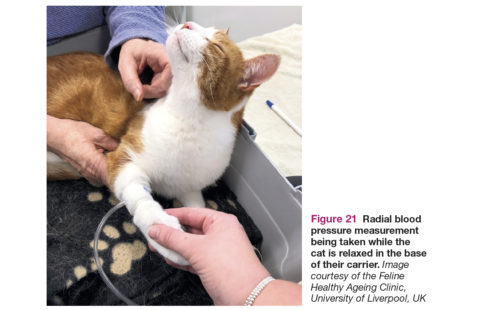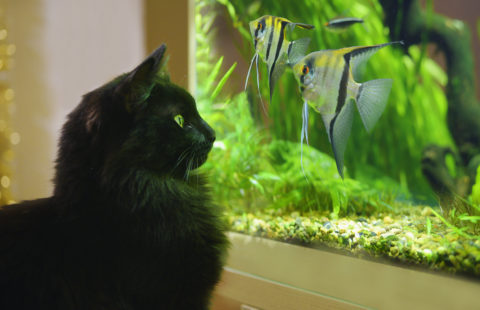International Cat Care are partnered with The British Veterinary Nursing Association (BVNA) as the BVNA’s chosen charity. In this new series, BVNA president Alex Taylor will be writing articles for our blog aligned to our monthly social media themes. This month is ‘Feeding and eating’, read on for some great advice about how to keep mealtimes interesting for your cat.
Believe it or not, there is very little difference genetically between the domestic cat (Felis catus) and its closest ancestor the African Wildcat (Felis lybica). This means that pet cats are still programmed as little survivalists, who would naturally be spending half of their time searching and hunting for food. Hunting not only uses up a lot of calories (many hunts are unsuccessful) but it also keeps cats mentally stimulated too. Even well-fed cats will still hunt because their survivalist nature as solitary hunters means that they are designed to take full advantage of any opportunities to obtain food.
With that in mind, if we look at how the average pet cat accesses its food today, it differs greatly from the African wildcat, or even the domestic cat of the past few hundred years that lived with humans mostly in order to control vermin. Cats nowadays are usually fed a commercial diet made up of dry kibble and/or wet meat. These complete and balanced diets are designed to ensure each cat receives all of the nutrients it needs to help maintain health, which is good as it means cats live longer and healthier lives than they did years ago. Commercial cat food is nutritious, but also calorie dense and incredibly palatable meaning that it is easy for cats to overeat. Owners might also accidentally overfeed if they have not weighed out the right amount or adjusted food intake for each individual cat’s lifestyle.
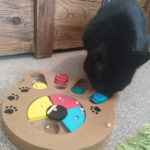
Photo credit: Alex Taylor
With almost half of all owned cats being reported as being obese nowadays, we should be considering not just what we feed cats, but how we feed them. Ideally, the frequency of feeding a cat should mimic its natural feeding pattern e.g., several small meals a day and should take a while to ‘consume’ (as it would with small prey), rather than just being put into a bowl. By adapting your cat’s feeding regime, you can help prevent boredom as your cat has to ‘work’ for its food – which is a much more species-appropriate way for cats to obtain food. So how can cat owners achieve this? Here are some tips:
Follow the instructions on the packet or pouch to ensure it is being fed the correct amount. Always weigh your cat’s food and consider your cat’s lifestyle and how active it usually is.
Consider splitting your cat’s food into five smaller meals. This will mimic your cat’s natural eating pattern and can help prevent it gorging on food. It may also help prevent competition for food between cats in the same household and begging behaviours, as the meals are spread out more evenly. Timed feeders can be used overnight to ensure your cat gets a meal during this time.
Try hiding dry food in different locations around the house, this not only provides mental stimulation but also encourages exercise (definitely more challenging than just walking to a food bowl!).
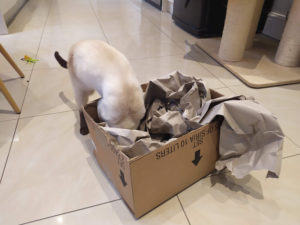
Photo credit: Alex Taylor
If there are several cats in the household then you should feed each cat in a different area. Cats fed from the same bowl or in the same area are more likely to compete for food, resulting in conflict and bolting food, which can lead to obesity or regurgitation.
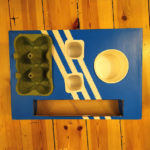
Photo credit: Alex Taylor
Try puzzle feeding your cat. Cats are great problem solvers and most enjoy puzzle feeding, which can help reduce problem behaviours associated with anxiety, boredom, and frustration. If your cat has not tried puzzle feeding before you should always start with something simple on the easiest level, as this will help ensure the cat comes back again and prevents frustration of not being able to obtain the food easily. Puzzle feeders can be shop bought or you can even make your own. For more information about puzzle feeding cats go to http://foodpuzzlesforcats.com/. You can use both wet and dry food in puzzle feeders and It’s entirely possible to feed all of your cat’s meals using a puzzle feeder, which is much more fun than eating from a bowl!
Further reading:
https://icatcare.org/app/uploads/2019/12/five-a-day_felix_full_report.pdf
https://icatcare.org/feeding-cats-creatively/
https://www.pfma.org.uk/_assets/docs/White%20Papers/PFMA-Obesity-Report-2019.pdf
BVNA is the representative body for veterinary nurses. They promote the interests of veterinary nurses, and prepare their members for the challenges ahead. To find out more, visit https://bvna.org.uk/



